
伤口世界
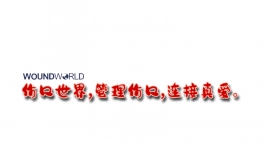
- 星期一, 18 3月 2024
Tirzepatide for management of type 2 diabetes
Tirzepatide (Mounjaro®) is a once-weekly, injectable glucose-lowering medicine newly available in the UK. It is licensed for the treatment of type 2 diabetes and for weight management. This factsheet gives an outline of tirzepatide, its indications, benefits and side effects, as well as providing tips for prescribing. In particular, the article focuses on tirzepatide’s indication for glucose lowering.
Licensed indications
In the UK, tirzepatide has two licensed indications:
1. For the treatment of adults with insufficiently controlled type 2 diabetes as an adjunct to diet and exercise:
● As monotherapy when metformin is considered inappropriate due to intolerance or contraindications,
or:
● In addition to other medicinal products for the treatment of type 2 diabetes.
2. For weight management, including weight loss and weight maintenance, as an adjunct to a reduced-calorie diet and increased physical activity in adults with an initial BMI of:
● ≥30 kg/m2 (obesity),
or:
● ≥27 kg/m2 to <30 kg/m2 (overweight) in the presence of at least one weight-related comorbid condition (e.g. hypertension, dyslipidaemia, obstructive sleep apnoea, cardiovascular disease, prediabetes or type 2 diabetes).
Place in NICE guidelines
To date, NICE has only considered the glucose-lowering indication for tirzepatide. The TA924 guidance1 recommends tirzepatide for treating type 2 diabetes alongside diet and exercise in adults when it is insufficiently controlled only if:
● Triple therapy with metformin and two other oral antidiabetes drugs is ineffective, not tolerated or contraindicated,
and:
➤ BMI is ≥35 kg/m2 and there are specific psychological or other medical problems associated with obesity,
or:
➤ BMI is <35 kg/m2 , and:
■ Insulin therapy would have significant occupational implications,
or:
■ Weight loss would benefit other significant obesityrelated complications.
Lower BMI thresholds (usually reduced by 2.5 kg/m2 ) are recommended for people from South Asian, Chinese, other Asian, Middle Eastern, Black African or African–Caribbean family backgrounds.
This article will focus on the NICE-approved indication of tirzepatide for glucose lowering in people with type 2 diabetes.
Author: Steve Bain, Professor of Medicine (Diabetes), Swansea University Medical School, and Assistant Medical Director for Research & Development, Swansea Bay University Health Board.
Citation: Bain S (2024) At a glance factsheet: Tirzepatide for management of type 2 diabetes. Diabetes & Primary Care 26: [Early view publication]
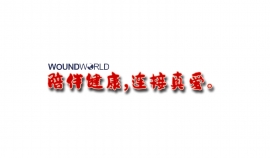
- 星期五, 15 3月 2024
Transformative strategies in diabetic foot care: a comprehensive approach to lower-limb ulcer recurrence
Andrew Sharpe, Matt Allen and Naseer Ahmad
Diabetes is a pervasive and lifelong condition and poses significant challenges, with one of its most debilitating complications being foot diseases, particularly foot ulceration. This condition not only places individuals at risk for infection but also represents a precursor to severe consequences, such as sepsis and lower-limb amputation (Lipsky et al, 2023). This article delves into the multidisciplinary role that is pivotal in mitigating lower-limb foot ulcer recurrence, a pervasive issue affecting a substantial portion of the diabetic population.
Citation: Sharpe A, Allen M, Ahmad N (2023) Transformative strategies in diabetic foot care: a comprehensive approach to lower-limb ulcer recurrence. The Diabetic Foot Journal 26(2): 40–42
Key words
- Diabetic foot care
- Lower-limb foot ulcer recurrence
Article points
1. Diabetes puts individuals at risk for infection but also represents a precursor to severe consequences such as sepsis and lower-limb amputation.
2. The multidisciplinary role is crucial in mitigating lowerlimb foot ulcer recurrence, a pervasive issue affecting a substantial portion of the diabetic population.
3. In addition, a more active highrisk population could ultimately be a lower-risk population with reduced expected mortality rates.
Authors
Andrew Sharpe is Advanced Podiatrist, Northern Care Alliance NHS Foundation Trust, Salford, Greater Manchester, UK; NIHR ARC-GM PreDoctoral Academic Fellow; Matt Allen is Consultant Podiatrist, Salford Care Organisation, Northern Care Alliance NHS Foundation Trust, Salford, Greater Manchester, UK; Naseer Ahmad is Consultant Vascular Surgeon, Manchester University Foundation Trust and Clinical Director Manchester Amputation Reduction Strategy (MARS)
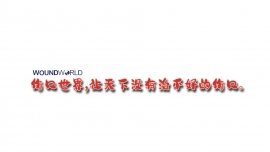
- 星期四, 14 3月 2024
Practical guidance addressing the national shortage of glucagon-like peptide-1 receptor agonists: From clinical experience
This advertorial has been developed, organised and funded by the Boehringer Ingelheim and Lilly Alliance for UK healthcare professionals.
Dr Rahul Mohan has received an honorarium to support the development of this advertorial.
Jardiance® (empagliflozin) Prescribing information and Adverse event reporting information for Great Britain and Northern Ireland can be found at the end of this document
Rahul Mohan
Dr Rahul Mohan, GP Partner and Principal, Ruddington Medical Centre, Nottingham, GP Lead for the Rushcliffe Community Diabetes Service, Committee Member of the Primary Care Diabetes Society.
Citation: Mohan R (2023) Practical guidance addressing the national shortage of glucagon-like peptide-1 receptor agonists: From clinical experience. Diabetes & Primary Care 25: 101–4
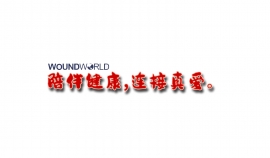
- 星期三, 13 3月 2024
Physical activity – how much is needed to optimise glycaemic control?
This systematic review and meta-analysis of 126 randomised controlled trials, published in Diabetes Care, identified that the weekly dose of physical activity required to optimise glucose-lowering in people with type 2 diabetes is 1100 Metabolic Equivalents of Task (MET)-minutes per week, and this remained consistent across a wide range of baseline HbA1c values. This is the equivalent of 36 minutes per day of moderate-paced walking, 244 minutes of moderate-intensity aerobic activity per week or 318 minutes of moderate strength training per week. Multicomponent activity (a mix of strength and aerobic activity), strength training and brisk walking were the most effective activities. Achieving the optimal weekly MET dose had greater effects in those with higher HbA1c at baseline, including up to a 1.02% reduction in those with an initial HbA1c >64 mmol/mol, and there was even a statistically significant 0.24–0.38% HbA1c reduction in those with prediabetes (HbA1c <48 mmol/mol) at baseline. These findings suggest that people with diabetes may need more physical activity than in the current generic recommendations of 150–300 minutes per week of moderate-intensity activity or 75–150 minutes per week of vigorous activity. Since we know that many do not achieve current recommendations consistently, helping people undertake these doses of physical activity is likely to need support from a multidisciplinary team, including exercise professionals and coaches, as well as from family and friends.
Pam Brown
GP in Swansea
Citation: Brown P (2024) Diabetes Distilled: Physical activity – how much is needed to optimise glycaemic control? Diabetes & Primary Care 26: [Early view publication]
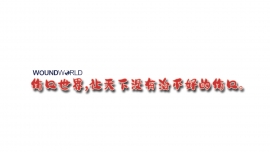
- 星期二, 12 3月 2024
Metformin does not increase risk of GI side effects during GLP-1 RA initiation and titration
Metformin use during initiation and titration of GLP-1 receptor agonists (GLP-1 RAs) does not increase the frequency or severity of gut-related adverse events, or the likelihood of discontinuing the GLP-1 RA, according to this study published in Diabetes Care. Since gastrointestinal (GI) adverse events are common with both metformin and with GLP-1 RAs, data from four major clinical trials of liraglutide and subcutaneous and oral semaglutide were used to explore whether those treated with metformin suffered more GI side effects. The results suggest that pausing metformin therapy during GLP-1 RA initiation, as has been recommended by some, is not required. There was in fact a higher rate of GI adverse events and GLP-1 RA discontinuations in those not taking metformin, which the authors postulate could reflect an increased susceptibility to gut side effects with any drug. They recommend that increased counselling and consideration of slower titration may be helpful in this group. This is useful information to guide practice as a recently published National Drug Safety Alert states that supplies of oral semaglutide are now adequate to support new initiations of this drug, following the mandatory cessation of new initiations of any GLP-1 RA that has been in place since June 2023 due to manufacturing shortages.
Pam Brown
GP in Swansea
Citation: Brown P (2024) Diabetes Distilled: Metformin does not increase risk of GI side effects during GLP-1 RA initiation and titration. Diabetes & Primary Care 26: [Early view publication]
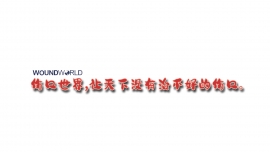
- 星期一, 11 3月 2024
Making the most of the diabetes foot-screening appointment: Think Foot, Think Kidney
Adrian Heald
The School of Medicine and Manchester Academic Health Sciences Centre; University of Manchester, Manchester, and Department of Endocrinology and Diabetes, Salford Royal Hospital, Salford
Mike Stedman
The Research Office, Res Consortium, Andover
Frank Webb
Buxton Hospital, London Road, Buxton
Rena Francis
Buxton Hospital, London Road, Buxton
Michael Edmonds
King’s College Hospital NHS Foundation Trust, London
George Dunn
Department of Podiatry, East Cheshire Trust, Macclesfield
Citation: Heald A, Stedman M, Webb F et al (2024) Making the most of the diabetes foot-screening appointment: Think Foot. Think kidney. Journal of Diabetes Nursing [Early view publication]
